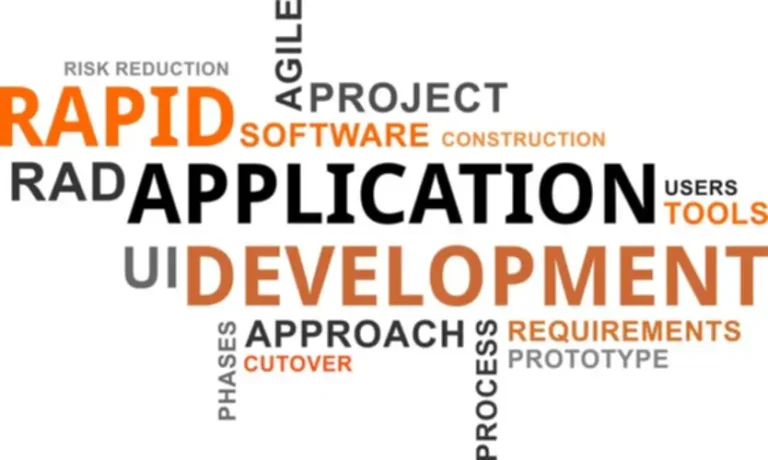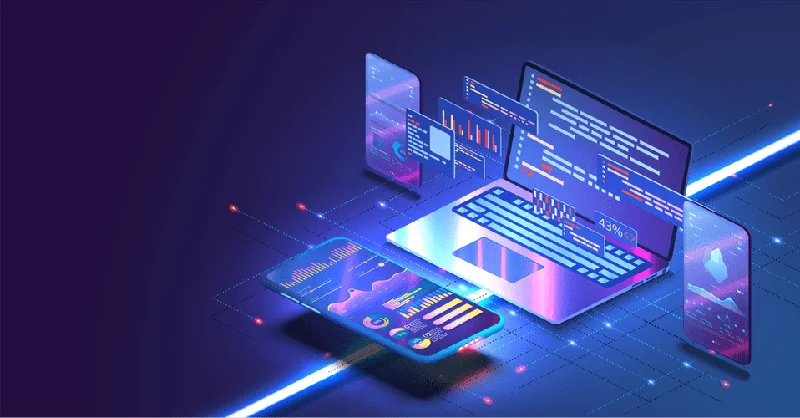Rapid Application Development (RAD): What it is, its phases, and benefits

Developing new applications in the shortest terms is one of the ways to stay a few steps ahead of your competitors. Creating something new usually takes a lot of time and effort, but with RAD, this gets a new meaning.

What is it and why should you use it? Keep on reading to find out.
What is Rapid Application Development (RAD)?
Rapid Application Development is a concept of creating software in the easiest and fastest way. Unlike many other methods, it does not use strict planning. The top priorities are the user feedback and the use of the software.

We are confident that we have what it takes to help you get your platform from the idea throughout design and development phases, all the way to successful deployment in a production environment!
Benefits of RAD
- Flexibility: developers can easily make changes during the creation of the app;
- Fast iterations;
- Decreased manual coding, meaning that there is less chance for errors;
- Less time spent on the development;
- Improved risk management due to the possibility to remove vulnerabilities during the development stage;
- Integrations support;
- Better customer satisfaction because of the improved collaboration between everyone involved in the project.
Disadvantages of RAD
- Only good for small teams;
- Requires a high level of collaboration;
- Not good for beginner developers;
- Depends on how involved the users are;
- Requires more management efforts.
How does Rapid Application Development work?
Several phases are included in RAD for successfully completing a project. They will be explained below.
1. Set the requirements
All the people who are involved in the creation of the application must discuss what they want to achieve by developing the app. This also should include budgets, deadlines, expectations. After every detail is discussed, you can proceed to the next step.
2. Make several prototypes
A number of raw prototypes should be created during a series of iterations. The developers and designers should work together with testers to achieve the best user experience. If the client confirms the prototype, then the next stage begins.
3. Start developing the project
During the prototype stage, most of the coding, testing, and design are done. The developers take into consideration user feedback to improve the application and proceed to the creation of the final version. Client feedback is still required.
4. Testing
Once it looks like the product is ready, it should be tested in many different ways. This includes usability, productivity, security, and a lot of other points. During this stage, testers and developers are able to find some flaws and vulnerabilities to fix them before the software is deployed.
5. Present the result
Finally, you have to convert all the data into a live production environment and make sure the application works properly. If everything is fine, this is where the development process ends.
Rapid Application Development vs Agile Methodologies
As we have already written above, RAD methodologies provide shorter delivery times while requiring that an experienced team participates in the development process and the client constantly collaborates with the developers. Agile methodologies work a bit differently.

During agile development, a lot of effort is saved due to the simplified documentation process, risks are found during the creation process, and customers are also constantly involved in the work. Nevertheless, there may be a lack of documentation that will make it difficult for new members to work with the software. The biggest issue is that this method requires a lot of customer interaction. This may lead to time and resource waste.

Why should you choose RAD?
There are several steps you need to check before assuming that your team needs to work with rapid development methodologies.
- Should you create a new product within a limited period of time?
- Is your team experienced enough to develop the project ASAP?
- Will your client collaborate during the development process?
- Can you divide the project into several modules?
- Do you have the required budget?
- Do your technologies support RAD?
After answering these simple questions, you will see whether your team is ready to work with this development method.
What should you do to start working with RAD?
The first thing you have to do is to make sure the whole team is involved in the project. This is the only real way to make sure that everything is done on time. Explain to everyone the principles of RAD and let them speak out if they have anything to say about it.
After everyone understands the meaning of rapid application development, make sure that all the stakeholders agree with the timelines. This will simplify a lot of things if everyone has nothing against deadlines and is ready to do their best.
Finally, analyze app development software and tools to select the most suitable ones for your company. It should fit your budget and comply with all the requirements. The whole team must be able to use this methodology efficiently.
The bottom line
Although rapid application development requires an experienced and dedicated team, it saves a lot of time and resources during the creation of a new product. It is much better than the agile methodology because it requires less client involvement and includes more documentation that makes it easier for new members to understand everything.
If you have to develop an application in the shortest terms, it is recommended that you get in touch with the Global Cloud Team as fast as possible. The specialists will create any software you need in the most affordable way.
Top Articles
Container vs VM (Virtual Machines): How Do They Differ?
I am here to help you!
Explore the possibility to hire a dedicated R&D team that helps your company to scale product development.






